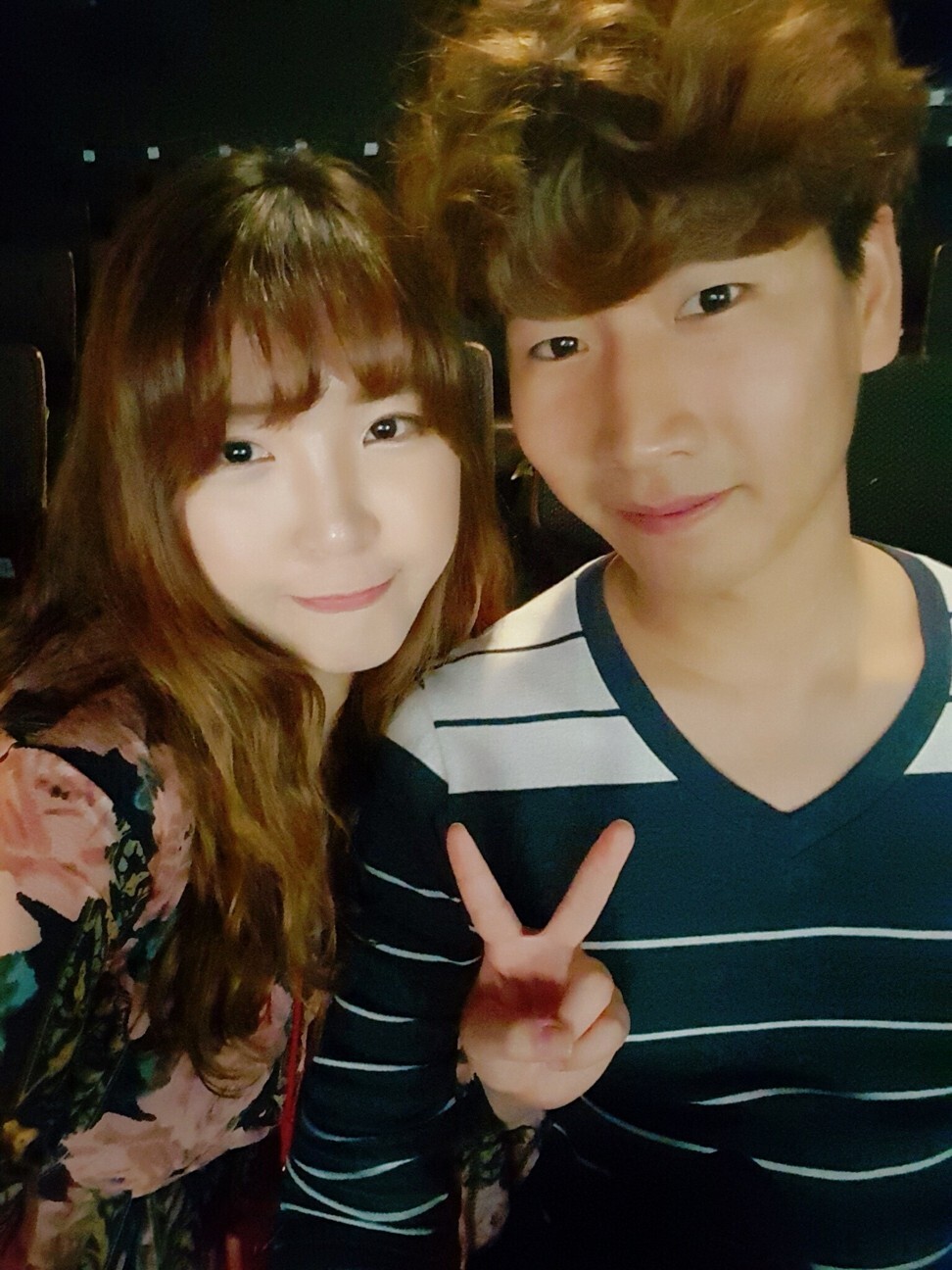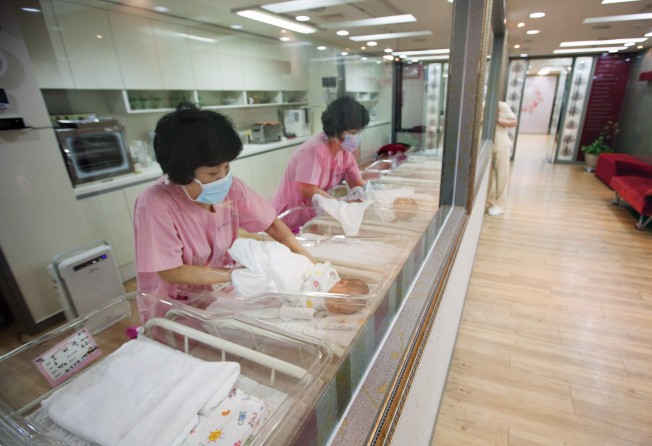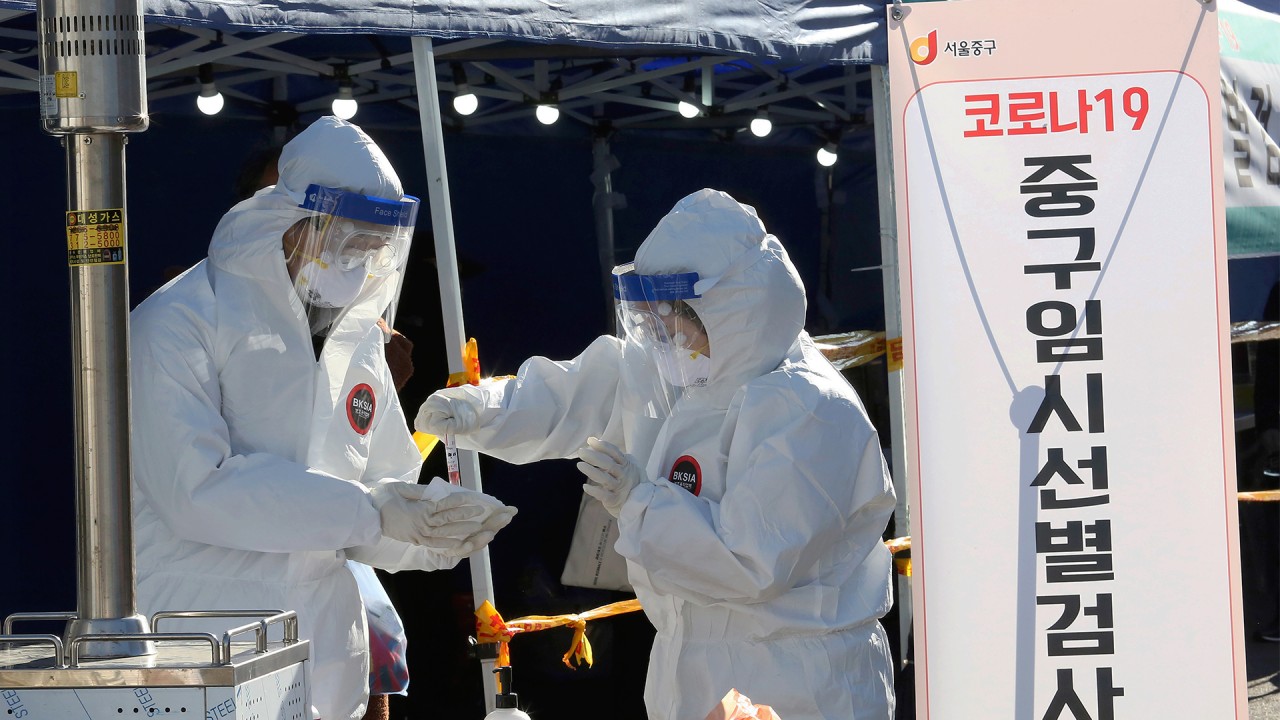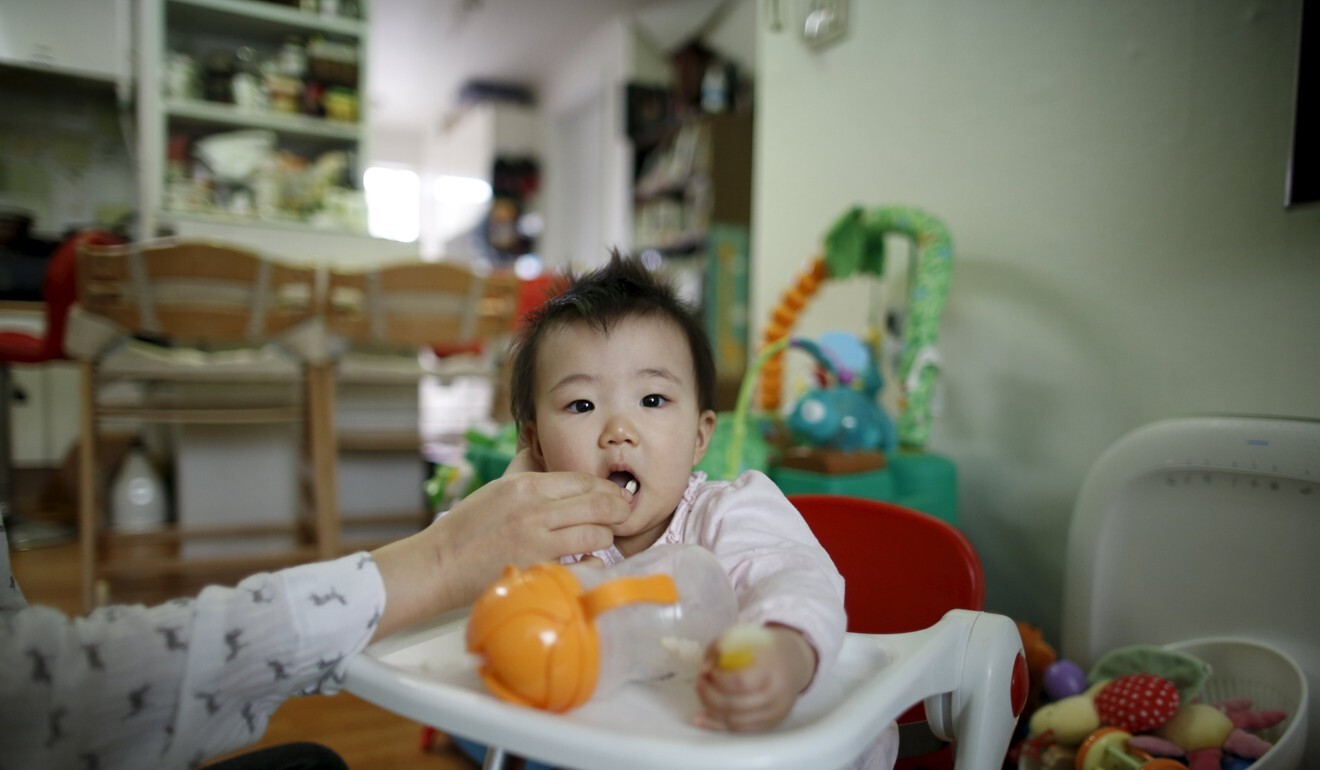
Can South Korea lift the world’s lowest birth rate by offering cash incentives?
- The country’s total fertility rate has dropped to just 0.84, a world low and one that has policymakers worried enough to give incentives to couples to have babies
- But Korean couples are put off by the high cost of raising children, and are unlikely to be swayed by the government’s offer of US$1,826 per birth starting in 2022

Kim Seung-pyo, 33, and Do Ara, 31, recently celebrated their first wedding anniversary. With a house and stable jobs, it may seem like the right time for them to start a family, and Kim has always dreamed of having at least three children. However, they have no plans to buy a cot any time soon.
“I have always loved being around children, but marriage has really given me a taste of reality,” said Kim, who works as a delivery driver. “We are barely making ends meet, so we question our ability to raise a child today.”
There’s also the question of who will take care of the baby, as both work. “Our families expect my wife to be the housewife and caregiver, but she also needs to maintain her work life,” he said.

Do is a kindergarten teacher, but is currently studying for a degree in counselling, with the aim of finding a job with better employee benefits such as parental leave.
For now, the two have talked about having just a single child. But the truth is they are also prepared to live without one at all – and they are not the only ones in South Korea to hold off on plans for a baby or to completely eliminate the thought of one.
There were almost 1 million first-time and newly married couples recorded in the country from 2015 and 2019. More than 40 per cent of these couples had no children, according to Statistics Korea.
South Korea became the country with the world’s lowest total fertility rate – the average number of children a woman bears in her lifetime – when it reached 0.92 in 2019, when the average rate among OECD countries was 1.65. In the third quarter of this year, South Korea’s rate declined even further to 0.84.
These are the alarming figures that have pressed the Presidential Committee on Ageing Society and Population Policy to enact unprecedented measures to combat the problem. The committee, chaired by President Moon Jae-in, announced its 4th Basic Plan for Low Fertility and Ageing Society last week. It will be in effect from 2021 to 2025.
Starting in 2022, each childbirth will be rewarded with 2 million won (US$1,826). A monthly 300,000 won incentive – which will be increased to 500,000 won per month in 2025 – will be given to the family until the baby turns 1. Couples also will get a maximum three million won in monthly coverage during their three-month parental leaves.
A 2019 survey by the Korea Institute for Health and Social Affairs of men and women aged 19 to 49 found that, among married respondents, economic instability and child-rearing were the biggest reasons for not having a baby, cited by 37.4 and 25.3 per cent of those surveyed respectively. Inadequate housing arrangements and dissatisfaction with childcare services followed, at 10.3 and 8.3 per cent, respectively.
For Yang Seung-hae, it was the need to send her two kids to after-school cram schools that made her get out of the house and get a job at a nearby junior school.

02:05
Coronavirus: South Korea's third Covid-19 wave sees record high cases
The 51-year-old teacher, who lives in the provincial city of Wonju, said elementary students go to an average of five cram schools that cover basics such as maths and literature to extracurricular activities like piano and swimming.
“These expenses are all necessary to get your child into a good college as college entrance exams are all about scoring better than the student next to you,” she said.
According to calculations by the Korean newspaper JoongAng Ilbo in 2019, it costs an average of 92.5 million Korean won (US$83,700) for the six years of private education that most junior school students go through.
Yang adds that mothers are also prone to postnatal depression, as women take the brunt of caring for children while men are oftentimes limited to the role of assisting the wife inside the house because of societal norms.
As the population becomes more dense, competition over limited resources becomes fiercer and, therefore, one’s survival instincts start to come before the need to reproduce
“It was only when both my children went off to college that I’ve even thought about the idea of a holiday,” she said. “If I could give one suggestion to newlyweds, it would be to plan on just one child if you are thinking about having children at all.”
Cho Young-tae, a public health professor at Seoul National University, thinks the government has failed in its investigations into the deep-rooted causes of the country’s low birth rate.
In an interview with Seoul Economic Daily, he compared the country’s prominent issue of rising real estate prices to its low birth rate.
“Both problems arise from having an extremely dense population,” he said. “As the population becomes more dense, competition over limited resources becomes fiercer and, therefore, one’s survival instincts start to come before the need to reproduce.”
With a total population of over 50 million, South Korea is one of the most densely populated countries in the world. The Greater Capital area that surrounds Seoul, the capital, has more than half of the country’s total population living within its boundaries.
“To solve the low birth rate issue is to understand the extreme competition that the young generation faces and to come up with policies that diminish the drive to live in Seoul,” he said. “We shouldn’t only focus on expanding welfare policies.”
Other members of the Population Association of Korea have also been critical towards the government’s approach to the problem at hand.
The organisation constitutes the top experts on issues related to the country’s population.
During an open forum organised by the health ministry back in August, Park Keong-suk, a sociology professor at Seoul National University, stressed the need to focus on the quality of life rather than the need to produce more babies.
“Especially during the pandemic when we are seeing great unemployment and social inactivity from the youth, we need to concentrate on restoring an environment that brings about an increase of birth rates naturally rather than looking at people as mere tools for reproduction,” she said.

Jun Kwang-hee of Chungnam National University has a more pessimistic outlook.
“I’m afraid that the country will be barely exist in the near future if something drastic doesn’t happen,” he said. “The current incentives for families with children only go so far, so the country might need to adopt more coercive programmes.”
He said that at the current pace, South Korea’s population numbers were doomed to reach devastatingly low figures. In South Korea, the number of deaths has outpaced that of newborns every month since November 2019.
He said that a better idea may be to give as much as 100 million won (US$90,295) per newborn, or to only give full-time jobs to parents of children.
As for Kim, who previously had planned to have as many as three children, he doesn’t seem to be too swayed by the recent unveiling of incentives that will soon go to couples to have children.
“My mind won’t be changed with an extra couple hundred won coming into our bank accounts,” he said. “Now, if they ever decide to give us 100 million won per baby, that’s a whole different question …”